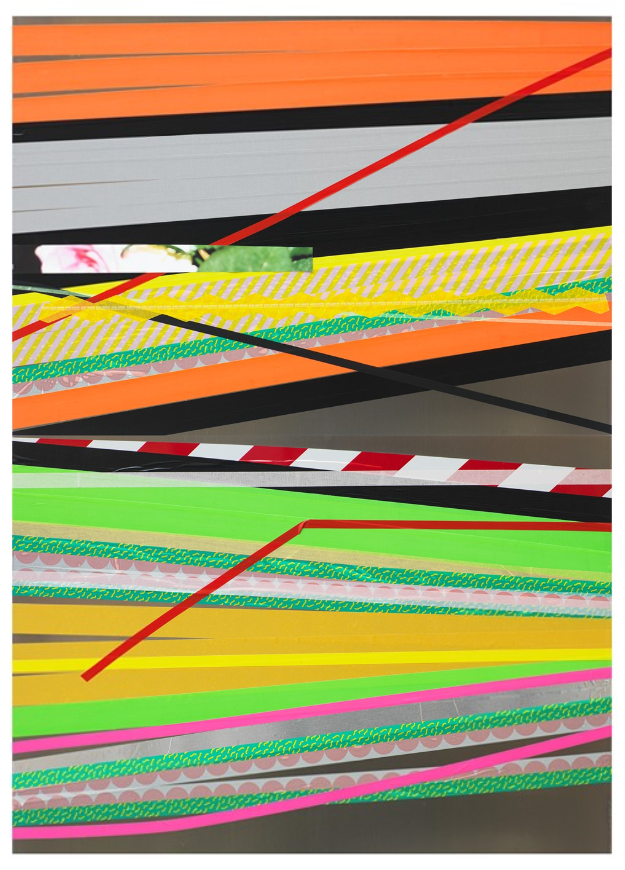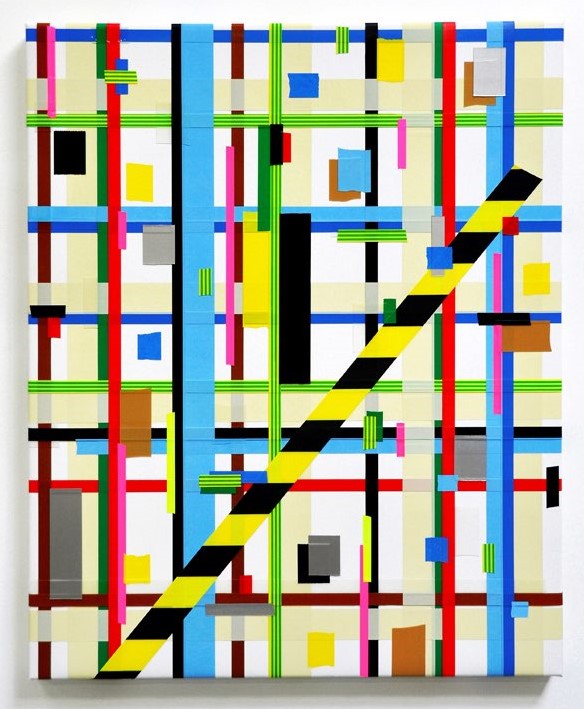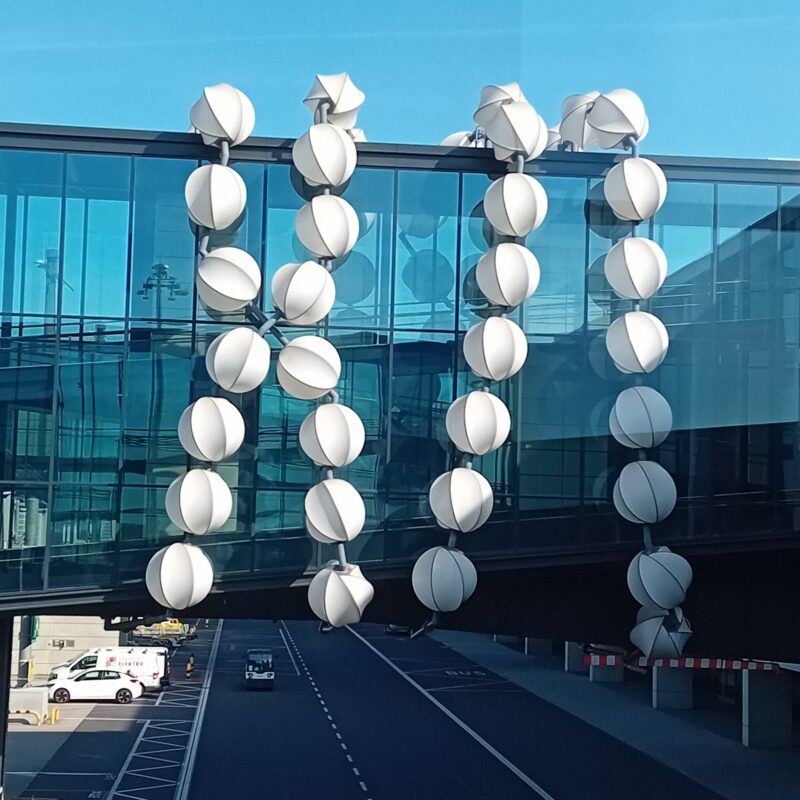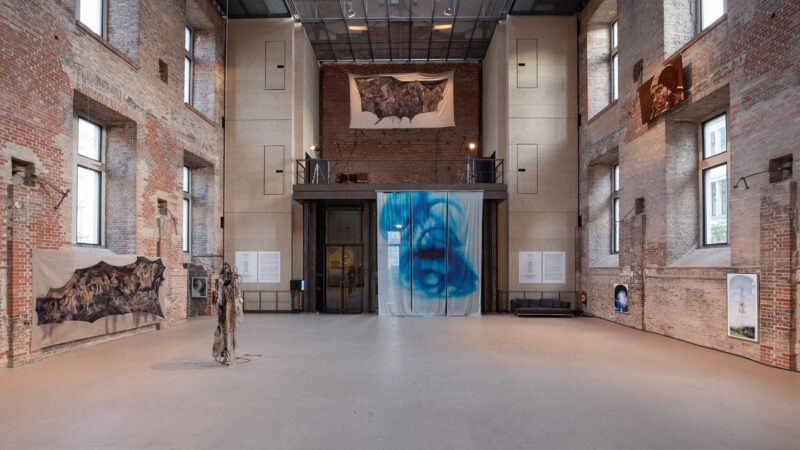
Isa Genzken: ‘Untitled’, 2017 – adhesive tape and foil on aluminium panel
It’s fairly common to find that two artists arrive, by different means, at a somewhat similar looking endpoint. That’s the time to remember that the motivating force is part of the work. A different case arises, though, when the effect obtained is the reverse of the other artist’s. Isa Genzken’s wall pieces from 2017 look, from a distance, like bright and dynamically balanced polychromatic abstract paintings with colour and glimpses of metallic ground in play. But the German is known for applying the collage aesthetic to found objects across the wide range of her work, and up close it does indeed turn out that she has applied horizontal and diagonal shop-bought tapes and foils onto plates of brushed steel. Mondrian’s use of tape to plan his paintings interacts with Duchamp’s invention of the ready-made. But if Genzken is pretending to be a painter, London-based Irish artist Caroline McCarthy in the similar-looking, if more ordered, ‘Crosstown’ is pretending not to be. Like Genzken, McCarthy typically brings everyday items into conversation with art – I like her still lives sculpted from wet coloured toilet paper and paintings reproducing matchboxes. And her tape works look rather like Genzken’s – even when you get close. But ‘Crosstown’ is a painting: McCarthy, I’d say, is undermining the readymade aesthetic by returning to the illusions of retinal painting it was meant to replace – the reverse of Genzken’s manoeuvre. In doing so, she joins quite a roster of contemporary artists to use ‘the tape illusion’ in different ways: other favourites are Kees Goudzwaard, David Musgrave, Alastair Gordon and Kaz Oshiro.

Caroline McCarty: ‘Crosstown’, 2016 – acrylic on canvas
Art writer and curator Paul Carey-Kent sees a lot of shows: we asked him to jot down whatever came into his head and he has read more if of his musings HERE







